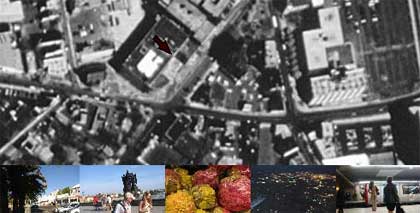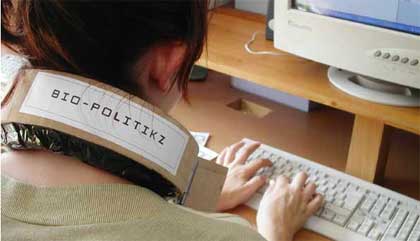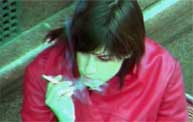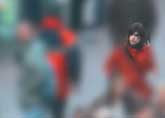One of the works that received an honorary mention at the prix ars electronica in the Net Vision category is Tracking Transience: The Orwell Project, a collection of photographs with a web based companion that tracks Hasan M. Elahi and his movements in real-time, from the last meal he ate to the last public urinal he visited.

Between June and November 2002, Elahi had been the subject of an investigation by the FBI as a possible terrorist suspect. He was at a residency overseas while this was initiated. Upon returning home, the artist spent 6 months frequently meeting with FBI agents who wanted to know every detail of everything, explains Elahi: What was I doing there? Who was I speaking with? What did I see? Where did I sleep? And even down to what I ate and drank. I was eventually cleared and to the relief of my friends, family and co-workers, I am officially no longer considered a terrorist – after a 3 hour long polygraph exam which was repeated 9 times.
Tracking Transience uses modern technoloies to document every aspect of his life. Inspired by the “prison ankle bracelet�, he chose to wear a device far more invasive of his privacy in terms of access to the detail of information available.
The device uploads images tagged with exact GPS coordinates of where the image was shot to a server which then sends the GPS tag to the United States Geological Survey which returns an aerial surveillance image of the artist’s exact location. The server compiles this map with the uploaded images and small thumbnails of the previously used images into the web based file which is then accessed online by anyone.
Three other networked performances but of shorter duration:
 In August 2004, Paula Roush –author of the Arphid Recordings performances in London– got herself electronically tagged. She created a semi fictional alter-ego Marion Manesta Forrester, who was electronically tagged and given a period of three days to earn her citizenship to Bowville, a fictional urban cityscape whose inhabitants were invited to follow her movements and vote for or against the protagonist.
In August 2004, Paula Roush –author of the Arphid Recordings performances in London– got herself electronically tagged. She created a semi fictional alter-ego Marion Manesta Forrester, who was electronically tagged and given a period of three days to earn her citizenship to Bowville, a fictional urban cityscape whose inhabitants were invited to follow her movements and vote for or against the protagonist.
Roush chose the name Marion Manesta Forrester, as a partial homage to the suffragettes- the first women to undergo and rebel against photographic surveillance, the work is also a partial reaction to the announcement of electronic tagging for asylum seekers in the UK, and a reference to Lars Von Triers‘ Dogville.
In 2002, the two members of 0100101110101101.ORG wore a GPS transmitter that, exchanging data with satellites, was constantly transmitting to their website their exact position on the urban environment. The VOPOS project was trying to underline how vast amounts of personal information are moving into corporate hands.
0100101110101101.ORG also put his own telephone under control for a month, so that all Internet users had real-time access to any phone conversation trough the website.
For the Liverpool Art Biennal in 2004, Jill Magid worked with the operators of the city’s CCTV network to teach them the techniques of professional filmmakers.


Throughout this one-month performance, called Evidence Locker, Magid wore a red trench coat and boots, ensuring she could be easily spotted throughout the city. She called the police on duty with details of where she was and asked them to film her in particular poses and even guide her through the city with her eyes closed – all using the public surveilance cameras.
All around Magid, the most innocent passers-by were transformed by the camera’s behaviour into potential bag-snatchers, rapists and serial killers.
